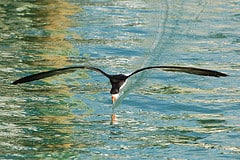It’s an odd world. Readers are now skimmers. Yet they crave information.
Google rewards content, not keywords. Yet keywords are the foundation of search.
What’s a marketer to do?
If you read my previous post, you know that I believe content is the new SEO. Optimization is no longer a game. Instead, if we optimize our websites for people, the search engines will (hopefully) recognize our focus on the user experience and reward us with better search rankings.
But we’re left grappling with an important question. Since content is for readers, how do we optimize it for non-readers?
Long copy provides better quality information. Short copy seems more accessible. Which is better?
Long copy provides better “optimization”
The standard for web copy used to be 250 words. Recognizing that most web browsers were only skimming our pages, shorter seemed more user-friendly. So we pared down every page to its basic elements: subheads and bulleted links.
Let’s face it, though, you can’t build a site with nothing but links. Where does your visitor finally find the information he’s looking for?
Since content earns points with Google, longer is necessarily better. Long copy gives more details and answers more questions. It takes the discussion deeper. I’d say 400 to 500 words is now a better standard.
But that brings us to an important question: Will longer copy lose readership?
You must balance content and readability
The issue of readability isn’t about whether people like to read. It’s about whether you’ve created an environment that makes it easy to find information.
The fact is, we’re too busy to read everything. Even readers don’t start by reading. Instead, we follow a simple process for determining what information is worth our time:
- Scan to determine the value of the information.
- Skim to find relevant sections of the page or post.
- Read the sections that look helpful.
- Go back and read the rest of the content, but only if it was valuable.
My preference is longer copy because short copy can’t provide enough information to stop a scanner or skimmer. The problem is that long copy can be intimidating to non-readers, and skimmers may not be able to see the information they’re looking for.
The solution is in formatting
The key is to write for all four stages of the process.
Break up your copy into scannable sections. Provide subheads to help skimmers locate relevant information. Then write high-quality content under each section.
Provide lots of white space with short paragraphs and relevant graphics. This keeps your copy from looking intimidating.
Tell your story with subheads. Scanners read subheads first. Organize your content logically, then give an overview of your story in the subheads.
Highlight important information for skimmers. Within paragraphs, make it easy for skimmers to locate the main points of your message. Make them stand out with bold or italics.
Some information requires length. Some doesn’t. I’d rather cover a subject completely than leave my readers wanting more.
On my website, I don’t follow strict word counts, but let my subject dictate length. Then I use formatting to make sure my copy is readable to scanners, skimmers and readers.
What’s your tactic? Have you found a way to keep readership high while still offering high-quality content?
photo credit: dobak


